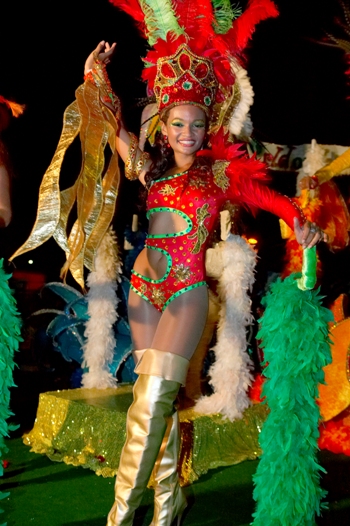Aruba's Carnival Revellers Turn Green On The Streets
Located 15 miles north of Venezuela in the warm waters of the southern Caribbean, Aruba is home to beautiful white-sand beaches, 82-degree days, and some of the warmest people in the world.
In Aruba, Carnival means weeks of events that bring you colourfully decorated floats, contagiously throbbing music, luxuriously costumed groups of celebrants, torch light parades and so much more. Running from the start of the New Year on January 1st, this has got to be the greatest party ever!
This year, celebrating its 60th anniversary, the Aruba Carnival will see revellers in the Dutch Caribbean island of Aruba playing their part in helping the environment and powering their own hotel. 
During the island's carnival a local company collects all the litter and add it to other refuse at its waste separation plant for recycling. Meanwhile, a sister company uses any refuse which cannot be recycled in its plant to produce biogas, which in turn is used for the production of electricity. This recently-opened plant is producing around two per cent of Aruba's electricity demand - around two megawatts - but aims to use 70 per cent of the island's household waste to produce more than three times that. However, combined with other new projects such as a wind farm and solar park, oil-fuelled power production will be reduced by around 45 per cent.
Construction of the solar park is also under way at the island's Queen Beatrix Airport, with the airport's main car park being covered with solar panels - the biggest project of its type in the Caribbean. It is expected to produce enough power for the airport's entire consumption, equivalent to that required for 500 homes and is scheduled to be fully operational by May 2014.
Located on the island's northern coast, 10 180-metre high wind turbines produce 20% of Aruba's electricity at the Vader Piet Windmill Farm, Aruba's first wind farm, built in the winter of 2009. A second planned wind farm will double this production.
The island's constant supply of sun, eastern trade winds and ocean currents allow for research and field-testing of renewable energy technologies. In June 2012, Aruba's Prime Minister, Mike Eman, and entrepreneur Richard Branson announced a partnership between Aruba and the Carbon War Room, an initiative aiming to reduce global carbon emission. The partnership will move the island to 100 percent renewable energy while eliminating any reliance on fossil fuels and will create a model for other countries to copy.
In addition to pursuing alternative energy initiatives, locals and visitors alike join together for the Aruba Reef Care Project, the island's largest volunteer environmental initiative. The project has attracted more than 800 people annually since 1994 and results in cleaner reefs, public beaches and shallow waters.
For more information about the Dutch Caribbean island of Aruba visit www.aruba.com